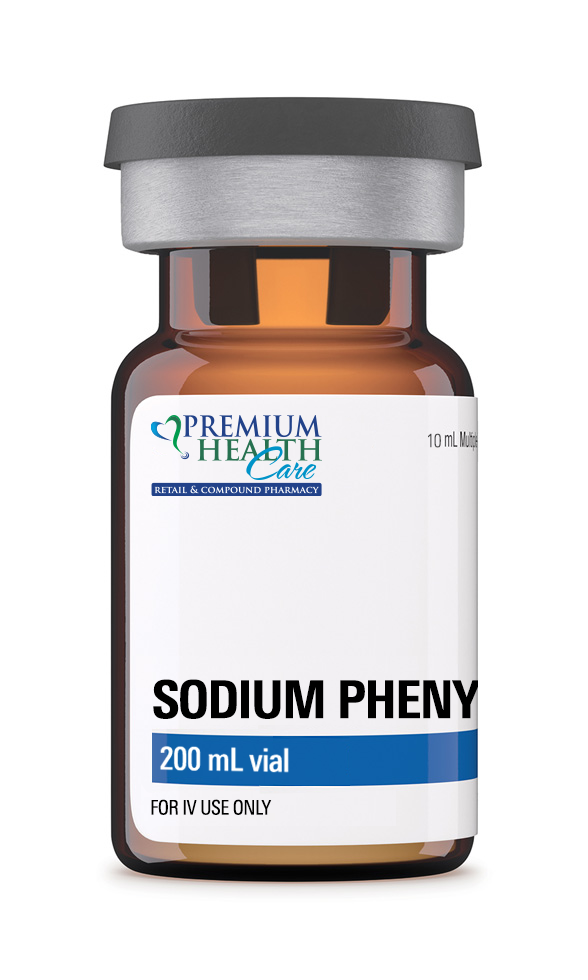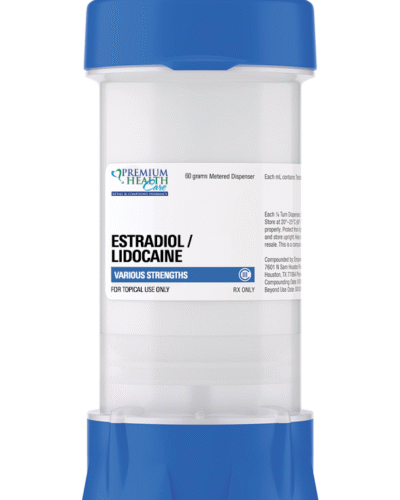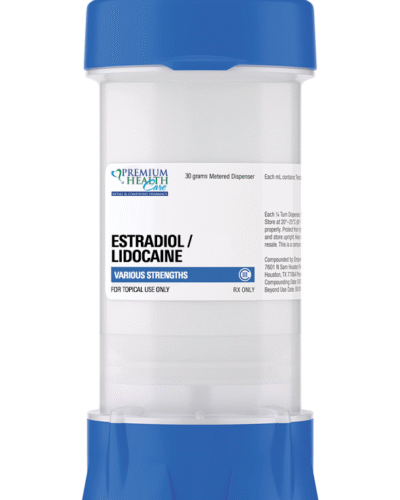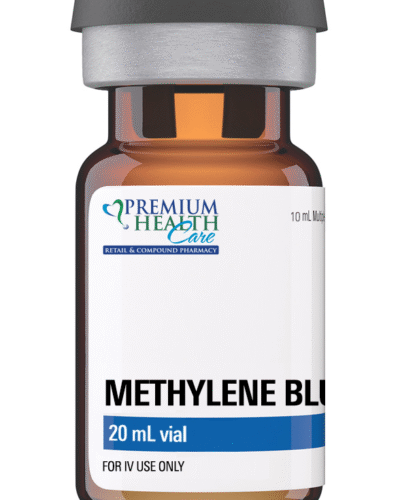Description
(Metabolic Modulator and Epigenetic Therapy for Mitochondrial, Neurological, and Inflammatory Support)
Advanced Cellular Detoxification and Epigenetic Regulation for Chronic Illness and Functional Recovery
Sodium Phenylbutyrate (NaPB) is a short-chain fatty acid derivative and histone deacetylase inhibitor (HDACi) with a broad range of applications in detoxification, metabolic regulation, and gene expression modulation. This sterile injectable solution, compounded at 200 mg/mL in a 10 mL vial, is intended for IV use in clinical settings under the supervision of a licensed healthcare provider.
Originally FDA-approved for urea cycle disorders due to its ammonia-scavenging properties, sodium phenylbutyrate has emerged as a powerful tool in functional, neurological, and anti-aging medicine, particularly in protocols addressing neuroinflammation, mitochondrial dysfunction, and epigenetic imbalances.
Product Overview
- Active Ingredient: Sodium Phenylbutyrate
- Concentration: 200 mg/mL
- Volume: 10 mL sterile vial
- Formulation: Preservative-free, IV-compatible solution
- Route of Administration: Intravenous (slow push or diluted infusion)
- Storage: Store at 2–8°C (36–46°F); protect from light
- Use: For professional use only under physician supervision
What Is Sodium Phenylbutyrate?
Sodium Phenylbutyrate is a metabolic byproduct of butyric acid, chemically modified to be systemically bioavailable. It functions as:
- A nitrogen scavenger, promoting waste removal in the form of urea and glutamine
- An HDAC inhibitor, allowing for modulation of gene transcription
- A mitochondrial support agent, reducing oxidative stress and improving cellular respiration
- A neuroprotective compound, with applications in ALS, Alzheimer’s, and Parkinson’s research
Because of its multi-targeted activity, it is used in advanced detox protocols, neurodegenerative care, and systemic inflammatory control, especially in patients with chronic, multi-system illness or metabolic burden.
Mechanism of Action
Sodium Phenylbutyrate operates through several biologically significant pathways:
- Ammonia Scavenging
– Conjugates with glutamine to form phenylacetylglutamine, excreted via urine, effectively reducing systemic ammonia levels - HDAC Inhibition (Epigenetic Regulation)
– Loosens chromatin structure and promotes transcription of genes involved in anti-inflammatory, detoxification, and neuroprotective functions - Mitochondrial Function Enhancement
– Increases mitochondrial biogenesis and stabilizes electron transport chain function, especially under metabolic stress - Reduction of ER Stress and Oxidative Load
– Assists in protein folding and reduces reactive oxygen species in neural and hepatic tissue
Clinical and Functional Applications
1. Neurological Support
- Used in protocols for ALS, Alzheimer’s, Parkinson’s, and autism spectrum disorders
- Enhances neuroplasticity and mitochondrial function in brain tissue
- Reduces brain fog, inflammation, and oxidative stress
2. Detoxification and Metabolic Clearance
- Promotes ammonia removal in patients with liver dysfunction or post-viral toxicity
- Supports patients with chronic fatigue, mold illness, or multiple chemical sensitivity
3. Epigenetic and Anti-Inflammatory Therapy
- Modulates gene expression involved in immune response, apoptosis, and cell survival
- Used in cancer and longevity medicine research for its regulatory effects on tumor suppressor genes
4. Mitochondrial and Cellular Energy Support
- Used as part of protocols for Long COVID, ME/CFS, and neuroimmune syndromes
- Enhances ATP output and cellular resilience under metabolic stress
Dosing and Administration
- Typical dose: 2–5 grams per administration (equivalent to 10–25 mL, dosed under supervision)
- Route: Intravenous infusion (diluted in 100–250 mL of sterile fluid over 30–60 minutes)
- Frequency: 1–3 times per week, depending on protocol and patient tolerance
- Cycle duration: Typically 4–8 weeks per phase, reassessed regularly
All dosing must be individualized and guided by a qualified healthcare provider.
Safety and Tolerability
Sodium phenylbutyrate is generally well-tolerated when administered properly.
Possible side effects may include:
- Gastrointestinal discomfort or bloating
- Mild nausea (dose-dependent)
- Electrolyte imbalances with prolonged use (monitor sodium levels)
- Injection site irritation or phlebitis (if infused too rapidly)
Monitoring: Renal and hepatic panels, ammonia levels, and nutritional markers are recommended during therapy.
Contraindications
Avoid use in:
- Patients with severe renal or hepatic impairment unless closely monitored
- Pregnant or breastfeeding individuals (unless clearly needed and under physician supervision)
- Known hypersensitivity to sodium-containing compounds
Use caution in patients with sodium-sensitive hypertension or edema.
Storage and Handling
- Store refrigerated at 2–8°C (36–46°F)
- Protect from light and do not freeze
- Use aseptic technique for each withdrawal
- Discard any unused solution after 30 days of first puncture unless otherwise specified
Why Choose Sodium Phenylbutyrate?
- Dual-action therapy for detox and neurological resilience
- Supported by decades of research in metabolic and neurodegenerative disease
- Compatible with functional protocols involving NAD⁺, glutathione, mitochondrial cofactors
- Effective in multi-system illness, fatigue, and cognitive dysfunction
Summary
Sodium Phenylbutyrate Injection – 200 mg/mL, 10 mL Vial delivers a uniquely powerful and clinically versatile therapy for detoxification, mitochondrial repair, and epigenetic modulation. Whether used in advanced neurological care, chronic illness recovery, or cellular optimization programs, this compound helps restore metabolic clarity, cognitive sharpness, and long-term resilience from the cellular level outward.







Reviews
There are no reviews yet.